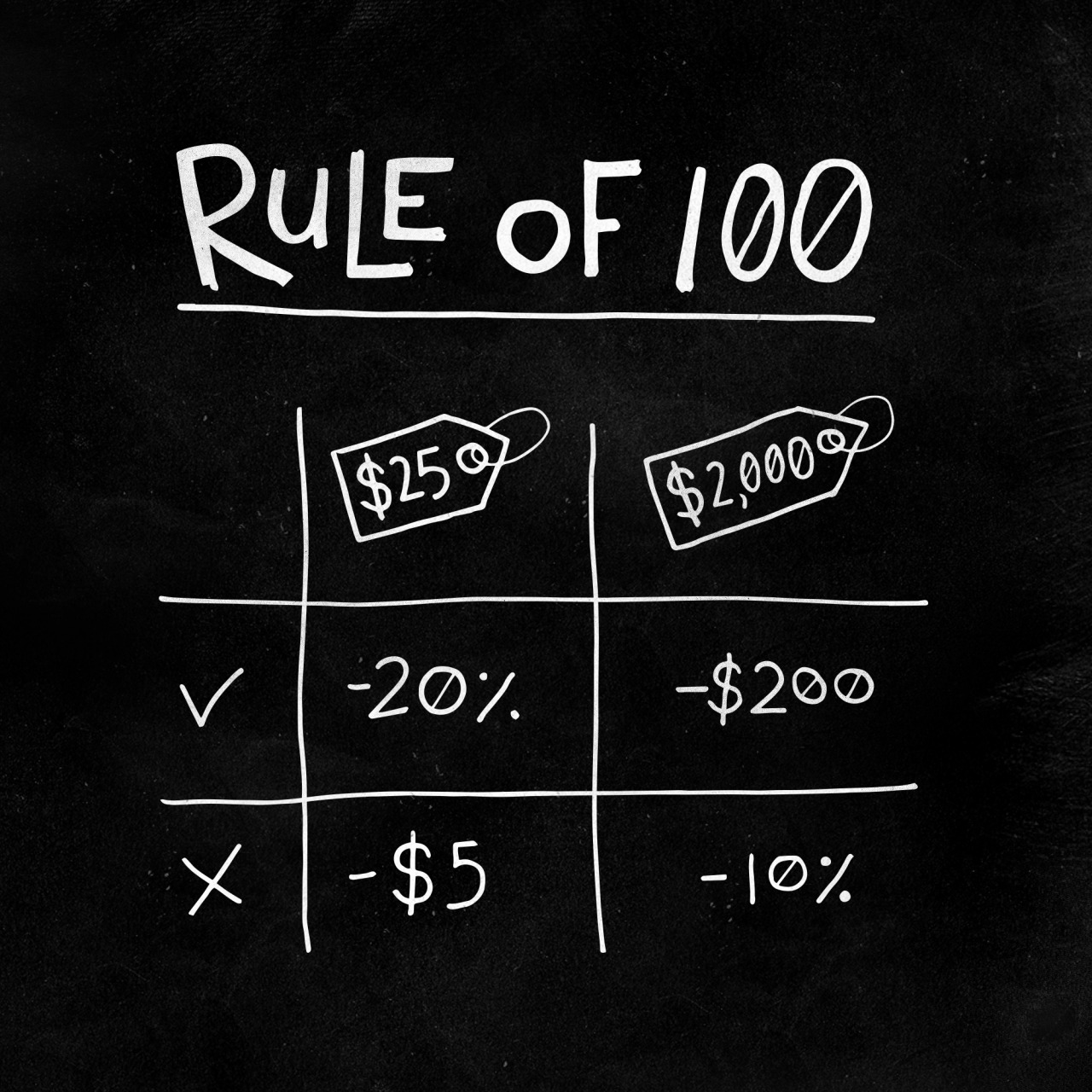
Jonah Berger — Contagious: Why Things Catch OnTake twenty percent off a $25 shirt. The same reduction can be represented as 20 percent off or $5 off. Which seems like a better deal? Or think about a $2,000 laptop. The same reduction on a $2,000 laptop can be represented as 10 percent off or $200 off. Does one method of framing the discount make the deal seem better than the other?
Researchers find that whether a discount seems larger as money or percentage depends on the original price. For low-priced products, like books or groceries, price reductions seem more significant when they are framed in percentage terms.
Twenty percent off that $25 shirt seems like a better deal than $5 off. For high-priced products, however, the opposite is true. For things like laptops or other big-ticket items, framing price reductions in dollar terms […] makes them seem like a better offer. The laptop seems like a better deal when it is $200 off rather than 10 percent off.
A simple way to figure out which discount frame seems larger is by using something called the Rule of 100. If the product’s price is less than $100, the rule of 100 says that percentage discounts will seem larger. […] If product’s price is more than $100, the opposite is true. Numerical discounts will seem larger.